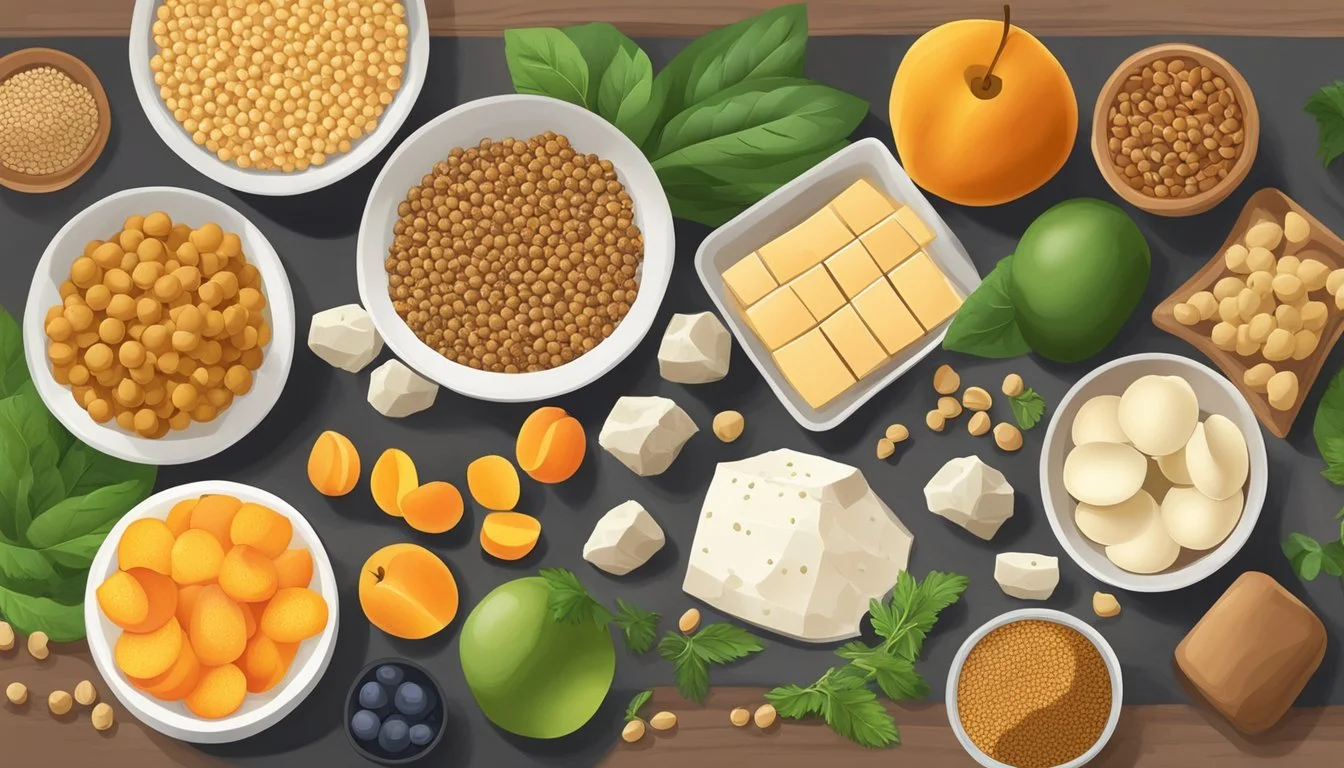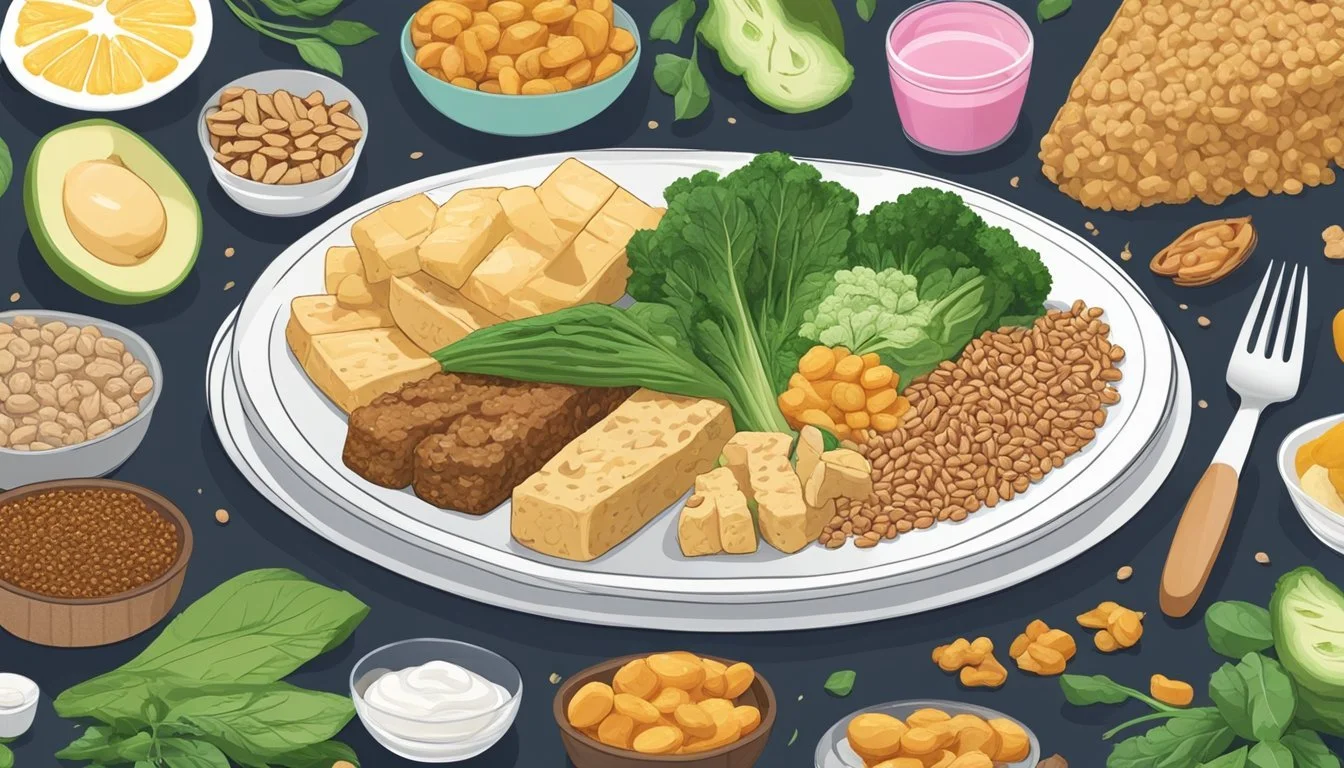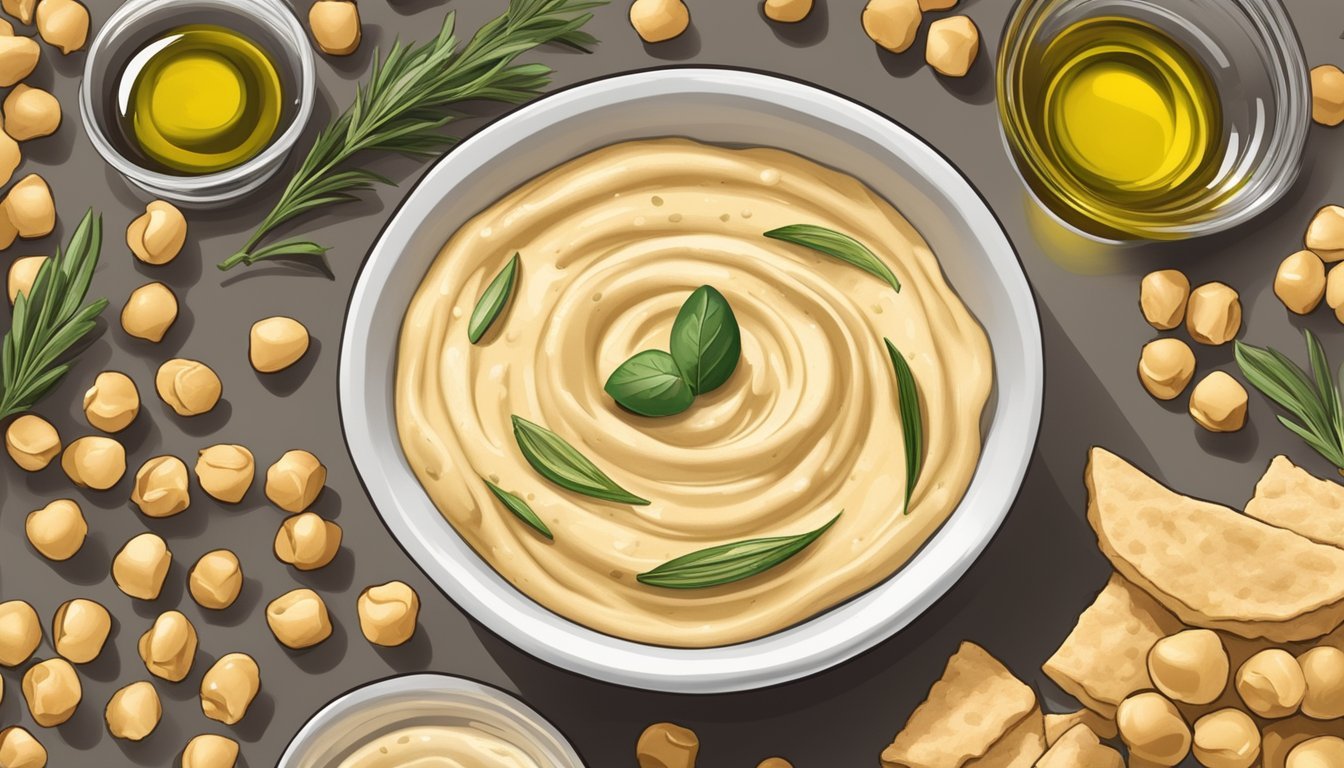Foods That May Support Estrogen and Progesterone Levels
Boosting Hormonal Balance Naturally
Balancing hormones like estrogen and progesterone is crucial for various bodily functions, including reproductive health, metabolism, and mood regulation. Many people seek natural methods to enhance their hormone levels through dietary changes and specific food choices.
Incorporating foods high in estrogen and progesterone into one's diet can help support hormonal balance and overall well-being. These foods contain phytoestrogens and other compounds that mimic the function of natural hormones, potentially benefiting those experiencing hormonal imbalances.
1) Flax Seeds
Flax seeds are a significant source of phytoestrogens, which are plant-based compounds that mimic estrogen in the body. They are particularly rich in lignans, a type of phytoestrogen found in high concentrations in flax seeds.
Studies have shown that flax seeds may help regulate hormone levels. Research indicates that dietary flax seeds can interact with medications like tamoxifen, enhancing their tumor-inhibiting effects on estrogen-dependent breast cancer.
Not only do flax seeds support hormone balance, but they also offer additional health benefits. They are rich in omega-3 fatty acids, contributing to brain health and anti-inflammatory properties. Furthermore, flax seeds can support lactation and breast health post-treatment for breast cancer.
Incorporating flax seeds into the diet is straightforward. They can be added to smoothies, yogurt, or baked goods. Ground flax seeds are often recommended for better nutrient absorption. Just 2 tablespoons a day can provide a significant dose of their beneficial compounds without overwhelming the diet.
2) Soy Milk
Soy milk, derived from soybeans, is renowned for its high phytoestrogen content. These plant-based compounds are known as isoflavones, which can mimic estrogen's effects in the body.
Regular soy milk consumption can offer benefits such as menopausal symptom relief and potentially lower risks of breast and prostate cancer.
Despite these advantages, it's important to note that the estrogenic activity of soy milk is significantly weaker than the body's natural estrogen.
Additionally, soy milk is a versatile and nutritious alternative to dairy milk, being rich in protein, essential fatty acids, and various vitamins and minerals.
This makes it a valuable addition to diets, especially for those who are lactose intolerant or adhere to plant-based eating habits.
Incorporating soy milk into daily meals is simple. It can be consumed on its own, added to coffee or tea, used in cereals, or included in smoothies and baking recipes.
Overall, soy milk stands out as a beneficial source of phytoestrogens, contributing to balanced hormone levels and offering nutritional benefits.
3) Tofu
Tofu is made by curdling soy milk and pressing the curds into a block. It is a rich source of phytoestrogens, which are plant-based compounds that can mimic the action of estrogen in the body. These compounds, known as isoflavones, have been studied for their potential health benefits, including hormone regulation.
Tofu is often praised for its versatility in cooking. It can be used in a variety of dishes, from stir-fries to soups, and can be marinated or grilled. This makes it an easy addition to different dietary preferences and cuisines.
In addition to isoflavones, tofu provides a good amount of protein. It is a popular choice for vegetarians and vegans looking to boost their protein intake. It's also low in calories and contains essential minerals such as iron and calcium.
Including tofu in a balanced diet may help in managing symptoms related to hormonal imbalances, especially during menopause. However, it is important to consume it in moderation and as part of a varied diet.
4) Tempeh
Tempeh is a traditional Indonesian food made from fermented soybeans.
It is a rich source of phytoestrogens, which are plant-derived compounds that mimic the activity of estrogen in the body.
Unlike many estrogen-rich foods, tempeh also offers high protein content, making it a valuable addition to various diets.
Tempeh is packed with essential nutrients like magnesium, iron, and calcium.
These minerals contribute to bone health and overall well-being.
The fermentation process also enhances the digestibility of soybeans, making tempeh a gut-friendly food option.
Due to its firm texture, tempeh can be used in numerous culinary applications.
It can be grilled, sautéed, or crumbled into dishes, serving as a versatile meat substitute.
Tempeh's nutrient profile makes it particularly beneficial for those looking to balance their hormone levels naturally.
5) Soy Yogurt
Soy yogurt is a nutritious option that provides a significant amount of phytoestrogens, which are plant compounds that can mimic estrogen in the body.
Made from soy milk, soy yogurt offers the benefits of isoflavones, a type of phytoestrogen known to influence estrogen levels.
Incorporating soy yogurt into the diet can support estrogen balance while delivering other essential nutrients like protein and healthy fats.
It's a versatile addition to meals, suitable for breakfast with fruit or as a snack.
This dairy-free option is especially beneficial for those who are lactose intolerant or following a vegan diet.
6) Miso
Miso, a staple in Japanese cuisine, is a fermented soybean paste known for its rich umami flavor.
It contains significant levels of phytoestrogens, particularly isoflavones. These compounds can mimic estrogen in the body, helping to balance hormonal levels.
Consuming miso regularly can contribute to maintaining healthy estrogen levels.
In addition to its hormone-balancing properties, miso is also a source of vitamins and minerals. Vitamins B, E, and K are among the key nutrients found in this versatile food.
Miso can be incorporated into various dishes, making it an easy addition to the diet. Miso soup, dressings, and marinades are common ways to enjoy its benefits.
For those seeking to manage estrogen levels naturally, miso offers a nutritious and flavorful option.
7) Dried Fruits
Dried fruits contain notable amounts of phytoestrogens, plant-based compounds that can mimic estrogen in the body. Apricots, dates, and prunes are popular choices that are high in these compounds.
These dried fruits can be a convenient snack, providing a quick source of energy and nutrients. They are rich in fiber, which helps with digestion and satiety.
Apricots, in particular, are a potent source of phytoestrogens and can be easily incorporated into both sweet and savory dishes. Dates and prunes not only offer estrogenic effects but also provide antioxidants and essential minerals.
Adding dried fruits to oatmeal, yogurt, or salads is a simple way to increase phytoestrogen intake. For those looking to manage menopausal symptoms, these fruits can be a beneficial addition to the diet.
8) Sesame Seeds
Sesame seeds are a valuable source of dietary phytoestrogens. These plant compounds mimic human estrogen and can help balance hormone levels in the body.
A study conducted in 2006 found that consuming sesame seed powder positively affected estrogen levels in postmenopausal women. These seeds also improved antioxidant levels, blood lipids, and sex hormones.
Sesame seeds are rich in lignans, which are converted into enterolactone in the digestive system. Enterolactone has estrogen-like effects and can support hormonal health.
Including sesame seeds in the diet can be beneficial. They provide a natural means to enhance estrogen levels, especially during menopause when estrogen production decreases.
Adding sesame seeds to everyday dishes is simple. They can be sprinkled on salads, mixed into smoothies, or used in baking. This versatility makes them an easy addition to various meals.
9) Hummus
Hummus is a popular dip and spread that is rich in phytoestrogens. The primary ingredient in hummus is chickpeas, which contain plant-based estrogens known as isoflavones. These compounds can mimic estrogen in the body, potentially supporting hormonal balance.
In addition to estrogen-like compounds, chickpeas offer several nutritional benefits. They are a good source of protein, fiber, and essential minerals like iron and manganese.
Hummus also typically contains other healthy ingredients like tahini, olive oil, lemon juice, and garlic. These ingredients contribute to its nutritional profile, providing healthy fats, antioxidants, and vitamins.
Incorporating hummus into a diet can be simple. It can be used as a dip for vegetables, a spread for sandwiches, or a topping for salads. This makes it a versatile addition to meals and snacks.
For those looking to increase their intake of phytoestrogens, hummus offers a tasty and nutritious option. Combining it with other estrogen-rich foods might provide additional benefits.
10) Garlic
Garlic is well-regarded for its health benefits and is a notable source of phytoestrogens. These plant-based compounds mimic the function of estrogen in the body, making garlic a potential aid in maintaining hormonal balance.
Rich in antioxidants, garlic also supports heart health and boosts the immune system. Though not as heavily saturated with phytoestrogens as soy or flaxseeds, garlic's contribution is still significant.
Incorporating garlic into meals can be simple. It can be added to various dishes such as soups, sauces, and salads. Its flavor enhances the taste while providing beneficial nutrients. Regular consumption of garlic can support overall well-being.
Understanding Estrogen and Progesterone
Estrogen and progesterone are critical hormones in the human body, influencing various functions and physiological processes. Their sources and biological importance are detailed as follows.
Functions in the Body
Estrogen is crucial for developing secondary sexual characteristics and regulating the menstrual cycle. It supports bone health by helping maintain bone density. Furthermore, estrogen impacts cholesterol levels by increasing HDL (good cholesterol) and reducing LDL (bad cholesterol).
Progesterone prepares the uterine lining for pregnancy after ovulation. Additionally, it helps regulate the menstrual cycle and supports early stages of pregnancy.
Both hormones influence mood, sleep, and cognitive functions, acting on various neurotransmitter systems.
Sources of Estrogen and Progesterone
Natural sources of estrogen include foods like soy products, flaxseeds, and certain fruits and vegetables such as pomegranates and carrots. These foods contain phytoestrogens, plant-derived compounds that mimic estrogen.
Progesterone is less available in dietary sources. Instead, the body produces it, primarily in the ovaries post-ovulation.
Note: For hormone balance, it’s suggested to consume a diet rich in these sources and consult healthcare providers about supplementation.
Biological Importance
Estrogen and progesterone are vital during reproductive years. Imbalances can lead to conditions like polycystic ovary syndrome (PCOS), endometriosis, or menopausal symptoms.
Estrogen's role extends to cardiovascular health by maintaining blood vessel flexibility and reducing plaque build-up.
Progesterone’s significance lies in ensuring a reproductive environment conducive to pregnancy and regulating immune responses during pregnancy.
Imbalanced levels can affect mental health, causing mood swings, anxiety, or depression. Thus, maintaining optimal levels of these hormones is imperative for overall well-being.
Health Benefits of Foods High in Estrogen and Progesterone
Consuming foods high in estrogen and progesterone can play a vital role in maintaining hormonal balance, enhancing reproductive health, and alleviating menopausal symptoms. Each benefit can potentially contribute to overall well-being when these nutrients are part of a balanced diet.
Hormonal Balance
Balanced hormone levels are crucial for overall health. Phytoestrogens found in foods like soybeans, chickpeas, and flaxseeds mimic natural estrogen in the body, helping to stabilize hormone levels.
Progesterone-rich foods such as sweet potatoes and zinc-rich nuts like cashews and almonds support the body's natural hormone production. These dietary sources can reduce hormone fluctuations, which are often responsible for mood swings and other hormonal imbalances.
By integrating these foods regularly, one can achieve a more consistent hormonal environment.
Reproductive Health
Estrogen and progesterone are key players in reproductive health. Estrogen-rich foods, like tofu and sesame seeds, promote a healthy menstrual cycle and enhance fertility. Isoflavones in soy can help regulate ovulation.
Progesterone supports uterine lining development, crucial for pregnancy. Foods like whole grains and beans, which are rich in vitamin B6, aid in progesterone synthesis.
Together, these nutrients support reproductive functions, contributing to a healthier reproductive system.
Menopausal Symptoms Relief
Women facing menopause often experience a decrease in natural estrogen and progesterone levels. Plant-based estrogens, such as those found in cruciferous vegetables and legumes, can help alleviate symptoms like hot flashes and night sweats.
Progesterone-boosting foods, including certain nuts and seeds, may mitigate insomnia and improve sleep quality during menopause.
Incorporating these foods into the diet can provide natural relief from the discomfort associated with menopausal transitions.









